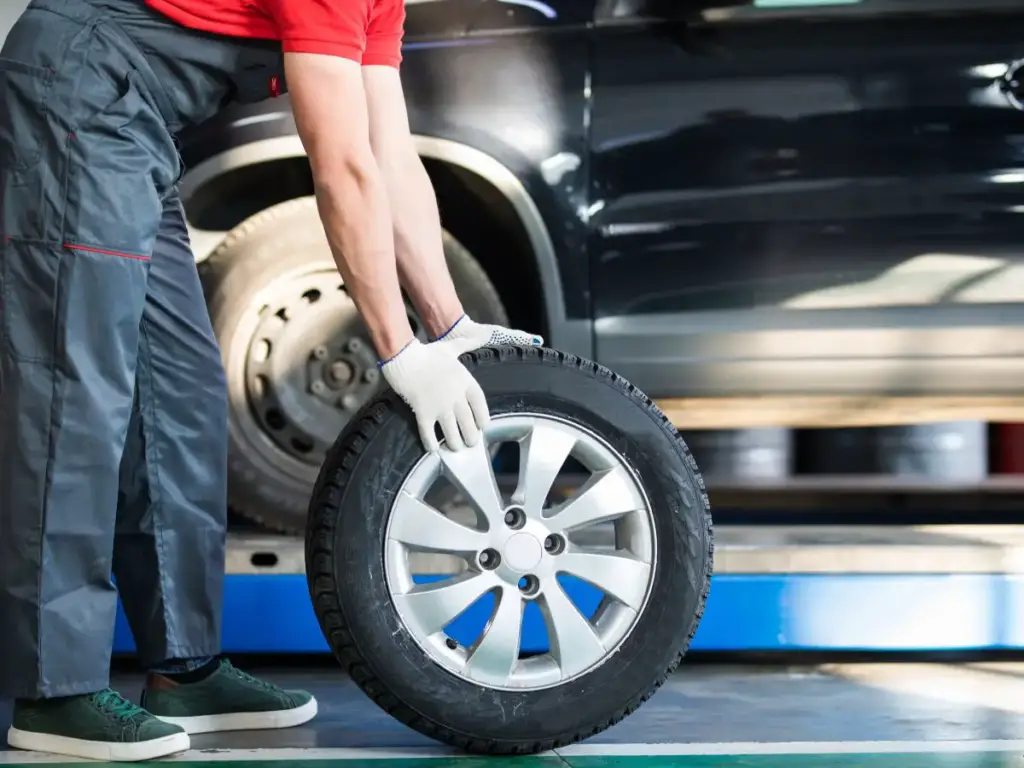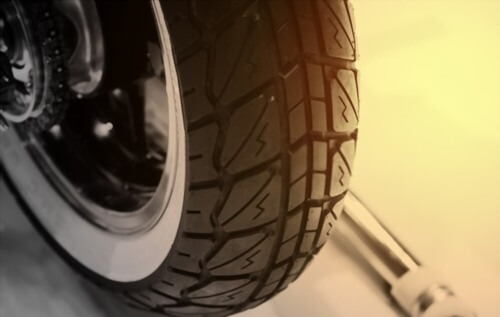The widest tire for a 9-inch rim is a 265 mm tire. This will provide you with enough contact patches with the road without bulging the tire outwards. Also, a 265 mm tire won’t be rubbed against the suspension and a 9-inch rim will be enough to support this wide properly. Don’t put tires wider than that if you want to avoid poor handling.
This article will explain with additional details what is the widest tire on 9 inch rim you can use.
What is the Widest Tire on 9 Inch Rim?
To determine the widest tire on a 9” rim, you have to add 1.5 inches to the rim size. In this case, the widest tire for this size rim would be 9+1.5 = 10.5 inches or 266.7 mm. So, the widest tire you can go for with a 9-inch rim is 265 mm.
However, this is not the standard size. It is recommended to use a tire 0.75 inches to 1.15 inches wider than the rim size. Look at the following chart to get the maximum, minimum, and standard tire sizes for a 9-inch rim.
| Rim Size | Minimum tire width | Standard tire width | Maximum tire width |
| 9 Inches | 235 mm | 245 or 255 mm | 265 mm |
For choosing the widest tire for an 8.5 rim or other sizes rims, you have to take a similar approach. It is best to use the largest rim that fits the tire properly for the best performance. In addition to adding weight, going bigger will distort the shape of the tire.
Can I Put 275 Tires On a 9-inch Rim?
On 9-inch rims, you can use tires up to 275/40. Depending on the tire, some say 275 is the widest you should go but you might experience cupping. According to others, anything over 255 would be too much.

So, you can not put 275 tires on a 9-inch rim. Although many car owners use 275 tires on 9-inch rims, you should not. 275 mm is too wide to fit in a 9-inch rim. It will cause some problems.
- The 9-inch rim will not support the tire properly. It will cause reduced handling performance, uneven wear, and potential damage to the tire or rim.
- As the rim is narrower, the tire’s sidewall will get curved outwards. You will not get adequate contact area with the road. It will affect the tire’s overall shape and performance.
- The tire will get too close to the suspension and while driving, the tire will keep brushing the suspension. As a result, the suspension will wear out too early.
With a 265 mm tire on a 9-inch wheel, you won’t face these problems. So, 265 mm is the widest tire on a 20×9 inch rim.
What are the Benefits of Using a Wider Tire
The benefits of using a wider tire are as follows.
- It provides more ground contact, resulting in enhanced traction. This is especially beneficial in off-road conditions or slippery.
- Wider tires are more comfortable, as they provide more cushioning between the road and the vehicle.
- They can also help to improve fuel economy by reducing rolling resistance.
- Lastly, wider tires can give a vehicle an aggressive and sporty appearance.
However, it is essential to consult a professional to ensure that the tires are compatible with the vehicle and will not adversely affect handling.

How do You Know What Size Tire to Get?
Every car has a different set of specifications, which includes the size of the rims and tires. When it comes to tires, there are a few things you need to consider to ensure that you are getting the correct size.
You can get information about the tire from different sources. Here are the basic ones.
- Check your car’s owner’s manual. It should list the recommended tire size, including the width, aspect ratio, and diameter.
- Check the sidewall of your current tire. The size of your current tires is usually printed on the sidewall of the tire, including the width, aspect ratio, and diameter.
- Check your car’s manufacturer’s official website for tire information. Or simply ask your car dealer or mechanic for the right information.
Frequently Asked Questions (FAQs):
How Much Does It Cost To Change A Tire?
Generally, most tire changes will cost between $50 and $100. However, if you have a larger vehicle, such as an SUV or truck, the cost may be closer to $200. The cost of getting a professional to change your tires can vary depending on your vehicle type and the number of tires that need to be changed.
Do Wider Tires Use More Gas?
Yes, wider tires generally use more gas. Wider tires have more contact with the road surface, which creates more rolling resistance and can require more energy from the engine to maintain speed. As a result, you get a reduced fuel economy.
Are Wider Rims Faster?
A wider tire will only be faster on a wider rim. The correct rims are the only thing that will make you faster with wide tires.
Final Take
Here goes my discussion on the widest tire on a 9-inch rim. Don’t put yourself and your car at risk by installing tires wider than the recommended one. It might look good initially, but it will create more problems for you.
That’s all for now. Best of luck and have a great day!
